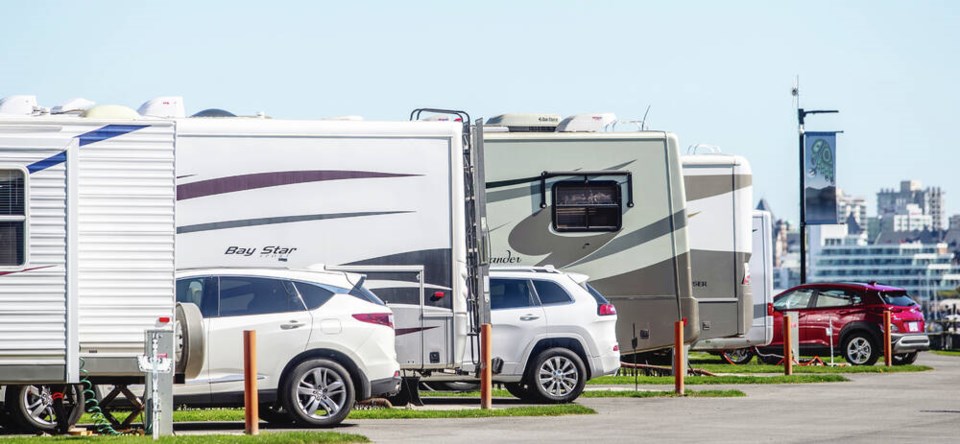With a continuing ban on leisure travel to the U.S., COVID-testing hassles for those travelling by air and a build-up of cabin fever — not to mention the ability to work from pretty much anywhere — interest in recreational vehicles has hit an all-time high.
Dealers on the Island say there has been so much interest in RVs of all shapes and sizes over the last 18 months that it’s starting to become difficult to find inventory, parts and accessories.
Jason Gallaugher, marketing manager with Arbutus RV, said they’ve seen a surge in demand through the pandemic, including many newcomers and young families wanting to get into RVing.
“This was one of the few options they could actually do over the last year,” Gallaugher said. “There’s that added layer of safety in RVs that people can control all aspects of their travel.”
Sylvia Thistle-Miller of Triangle RV said the newcomers tend to want to live by their own rules and have been opting for smaller units they can take off the beaten track.
“I love to see that — I love to see people exploring Canada instead of running across the border,” she said. “I think it’s time Canadians saw Canada.”
But the surge in demand has put pressure on inventory.
All dealers have reported shortages, though both Thistle-Miller and Gallaugher note that if buyers are willing to be flexible, vehicles are available.
It’s more of a problem when people want a specific RV, or a used one, since owners haven’t been as eager to sell during the pandemic.
Thistle-Miller said manufacturers have struggled with getting parts and labour, and in some cases have been rationing vehicles — offering dealers just a trickle of inventory.
With supply chains slowing manufacturing, it’s important to start planning now for next camping season, she said. “If somebody wanted to camp this time next year, they need to order now.”
Another problem is that most of the vehicles are manufactured in the U.S., and border closures have made transportation to Canada difficult. Thistle-Miller said there have been instances of motorhomes waiting at the border for someone to drive them across because the hired drivers either couldn’t or wouldn’t cross during the pandemic.
Canadian purchasers are also competing with buyers in the U.S., where interest is also surging.
The Canadian RV Association reported demand for new vehicles outstripped supply over the first six months of this year — Canadian dealers sold 30,376 vehicles, while manufacturers shipped just 30,102 north of the border.
In the U.S., RV retail sales are on a record pace, according to RVBusiness magazine’s most recent market report.
In 2020, the U.S. industry sold 520,075 vehicles, while in the first six months of this year, despite supply-chain problems that made getting parts difficult, the industry has already sold 325,032 units.
In 2019, pre-COVID, the industry sold 463,941 units.
The industry is expecting another surge in 2022, as effects of the pandemic linger and newcomers to RVing consider trading up their vehicles.
Gallaugher said inventory issues will likely continue, but he’s not expecting interest to wane as long as travel restrictions continue and some resist air travel.
Dave Robertson of Island RV Rentals agrees, adding if some of their customers in Eastern Canada start to return to the Island next year in large numbers, they will be swamped, given the surge in interest from locals.
“It was a busy summer with a lot of bookings,” he said, adding his company fleet hit a peak of 12 vehicles that he hopes to add to before next season.
And there may not be enough campsites to accommodate RVers.
Thistle-Miller said she has been vocal about the need to create more options on the Island, especially around Greater Victoria. “It’s desperate,” she said.



